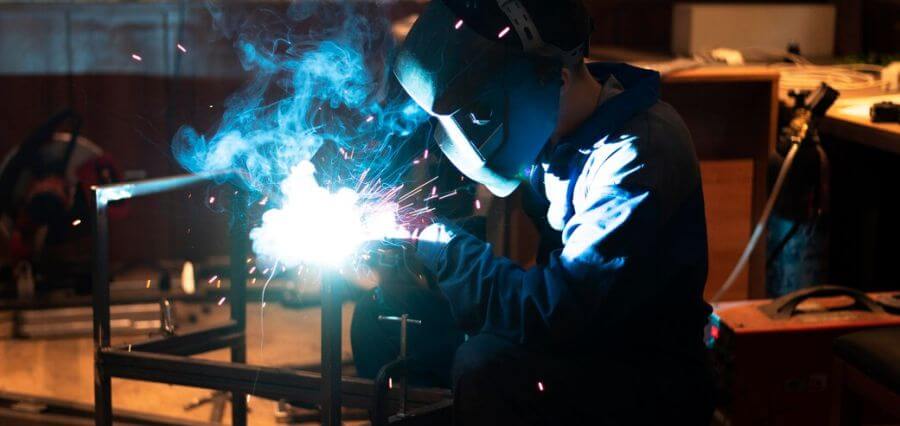Welding is a fundamental process in the manufacturing and construction industries. But despite its widespread use, there are many misconceptions surrounding the health risks associated with welding fumes.
In this blog, we will debunk some common myths surrounding welding fumes. We will also illuminate the importance of proper safety measures, such as using a fume extractor system.
Myth 1: Welding Fumes are Harmless; They are Just Smoke.
It’s a common misconception that welding fumes are smoke and pose no natural health hazards. In reality, welding fumes can contain a complex mixture of hazardous substances. The most concerning are metal particulates, volatile organic compounds (VOCs), and gases like ozone and nitrogen dioxide. Prolonged exposure to these fumes can lead to serious respiratory issues such as asthma, lung damage, and even cancer.
Myth 2: Adequate Ventilation is Not Necessary for Short-Term Exposure.
Contrary to popular belief, even short-term exposure to welding fumes can have adverse health effects. Proper ventilation is essential to ensure that these hazardous substances are effectively removed from welders’ breathing zones. Short-term symptoms from overexposure include eye irritation, dizziness, nausea, and disorientation. Neglecting ventilation can lead to long-term health problems.
Myth 3: Respiratory Protection Masks are Unnecessary.
A common myth is that investing in respiratory protection masks is unnecessary when working with welders wearing protective gear such as helmets or goggles. While these shields protect against physical harm like sparks or UV radiation, they do not provide sufficient protection against inhalation of toxic welding fumes. Welders should wear high-efficiency respiratory masks to reduce exposure to harmful particulates from welding operations.
Myth 4: Only Specific Metals Produce Hazardous Fumes.
It’s a misconception that only certain metals, like lead or aluminum, produce harmful fumes when welded. Fumes can be generated from various metals, including stainless steel, galvanized steel, and even plain carbon steel. The composition of welding fumes largely depends on the base metal used and the welding process employed.
Myth 5: Proper Safety Measures are Expensive and Not Worth the Investment.
Due to perceived costs, many businesses need to be more motivated to implement robust safety measures. However, failing to invest in proper safety protocols can have severe consequences for employees and companies. The costs associated with medical treatments, loss of productivity, fines, and legal liabilities outweigh any initial investments made toward engineering controls, personal protective equipment (PPE), and employee training.
Myth 6: Ventilation Systems Eliminate All Health Risks.
While ventilation is crucial in reducing exposure to welding fumes, it is not a foolproof solution when implemented in isolation. Ventilation needs to be complemented by other control measures, such as source capture extraction systems or local exhaust hoods that capture the fumes directly at their point of generation. This ensures that fumes are effectively controlled before they can disperse into the environment.
Myth 7: Welding Outdoors Eliminates the Need for Safety Measures.
It is a common misconception that welding outdoors eliminates the risks of welding fumes. While outdoor welding may seem less hazardous due to better ventilation, it does not make safety measures less critical. Outdoor welding can still expose workers and bystanders to harmful fumes, especially in confined spaces or areas with poor air circulation. It is essential to prioritize safety measures regardless of the location of welding operations.
Myth 8: Once You Have Been Exposed, You Can Do Nothing.
Some individuals believe that once they have been exposed to welding fumes, there is nothing they can do to mitigate the health risks. However, prompt action and preventive measures can greatly minimize the potential adverse effects of past exposure. Regular medical check-ups and lung function tests can help detect any early signs of respiratory issues caused by welding fume exposure. Taking proactive steps as soon as possible can help prevent further damage and better manage existing conditions.
Conclusion
Dispelling myths and misconceptions about welding fumes is crucial for creating a safe working environment for welders. Understanding the hazards associated with these fumes will help businesses prioritize worker health and implement appropriate control measures. By investing in proper ventilation systems, respiratory protection masks, and employee training programs on preventive measures against welding fume exposure, companies can ensure their employees’ long-term well-being while avoiding unnecessary legal risks. Remember that an educated workforce is empowered when it comes to maintaining safe workplace practices around welding operations.


